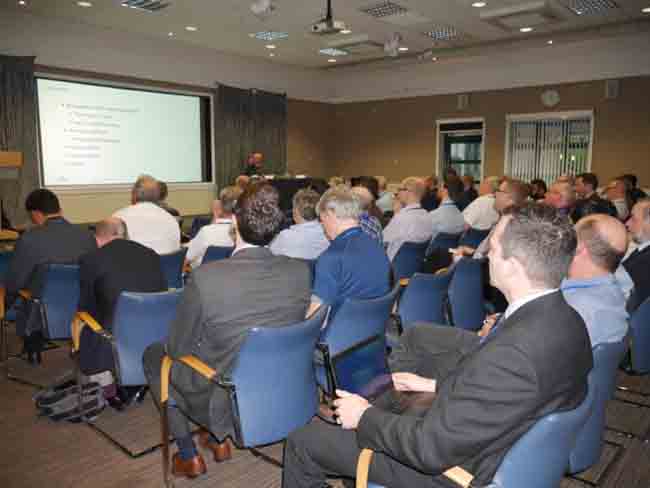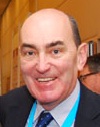Reflecting the diversity of the topics covered at the November 2017 ARMMS Conference the subjects of the papers that won prizes ranged from 3D printed circuits to a microwave applicator for medical use and better filter design, while there was also strong emphasis on mmWave 5G technology.
Voted by the conference delegates the winner of the National Instruments sponsored Steve Evans-Pughe Memorial Prize for the best paper and a cheque for £200 was Xiaobang Shang for his paper titled: 3D Printed Circuits for RF and Microwave Applications.

Xiaobang Shang (left) receives the Steve Evans-Pughe Memorial Prize for the best paper from John Crute, ARRMS Chairman.
The paper presents a range of 3D printed passive circuits investigated at the University of Birmingham, which covered a wide frequency range from 0.5 GHz to 100 GHz, and included a 0.5 GHz helical resonator filter, a 3 GHz combline filter, two 10 GHz waveguide filters based on spherical resonators, a 15 GHz filtering Butler matrix, a 30 GHz OMT and two 90 GHz waveguide filters. Most of the devices are based on lightweight polymers, which are capable of handling high temperature when ceramic filled resin is used. All of the circuits are optimised for 3D printing, so that enhanced microwave performance and/or considerable weight reduction can be achieved.
Two papers could not be split for the runners-up prize, so both were commended. One winner of the runners-up prize and the recipient of the £50 prize was John Kitchen of SJTechnologies who presented: Microstrip Filters – Can Lower Q Resonators Produce Better Filters? that looked at options available to the filter designer to consider the choice of lower Q resonators to achieve improvements in performance.

John Crute flanked by the runners-up winners: John Kitchen (left) and Abdul Moiz Ahmed Pirkani (right) who also received the Student Award.
The other winner was Abdul Moiz Ahmed Pirkani of The University of Manchester who not only received the £50 runners-up prize for his paper: High Efficiency Microwave Power Amplifiers for Portable Haemostasis Application but also the Student Award. He outlined a portable microwave applicator capable of delivering microwave energy at 5.8 GHz to effectively coagulate bleeding sites which cannot easily be controlled under conventional haemostatic modalities. Microwave power of sufficient level to achieve haemostasis is produced within the ‘power pack’ by means of a high efficiency Class F power amplifier capable of producing up to 15 W.
The current interest and activity in the development and implementation of mmWave 5G technology was a particular focus with Chris Clifton of Sony considering: 5G mmWave Implementation Options and Liam Devlin of Plextek RFI examining: The Design of a Dual-Band PA for mmWave 5G Applications, while Sana Salous of Durham University addressed: Millimetre Wave Band Propagation Studies for 5G Networks.

These are just a cross-section of the 16 technical papers presented to delegates from across the RF and Microwave industry who convened at Wyboston Lakes, Bedfordshire, UK, for the ANSYS sponsored bi-annual gathering of engineers, academics and business people. Credit goes to Chris Buck of Filtronic Broadband for assembling an interesting selection of papers.
The well established table-top exhibition featured a maximum of 20 displays and offered a place to discover the practical tools to compliment the subject matter of the conference. It also provided networking opportunities during coffee breaks and the lunch session, while the Society Dinner on the first evening also afforded networking opportunities and more.

The next ARMMS RF & Microwave Society meeting will be held on 23-24 April 2018 at The Oxford Belfry (near Thame), Oxfordshire.

